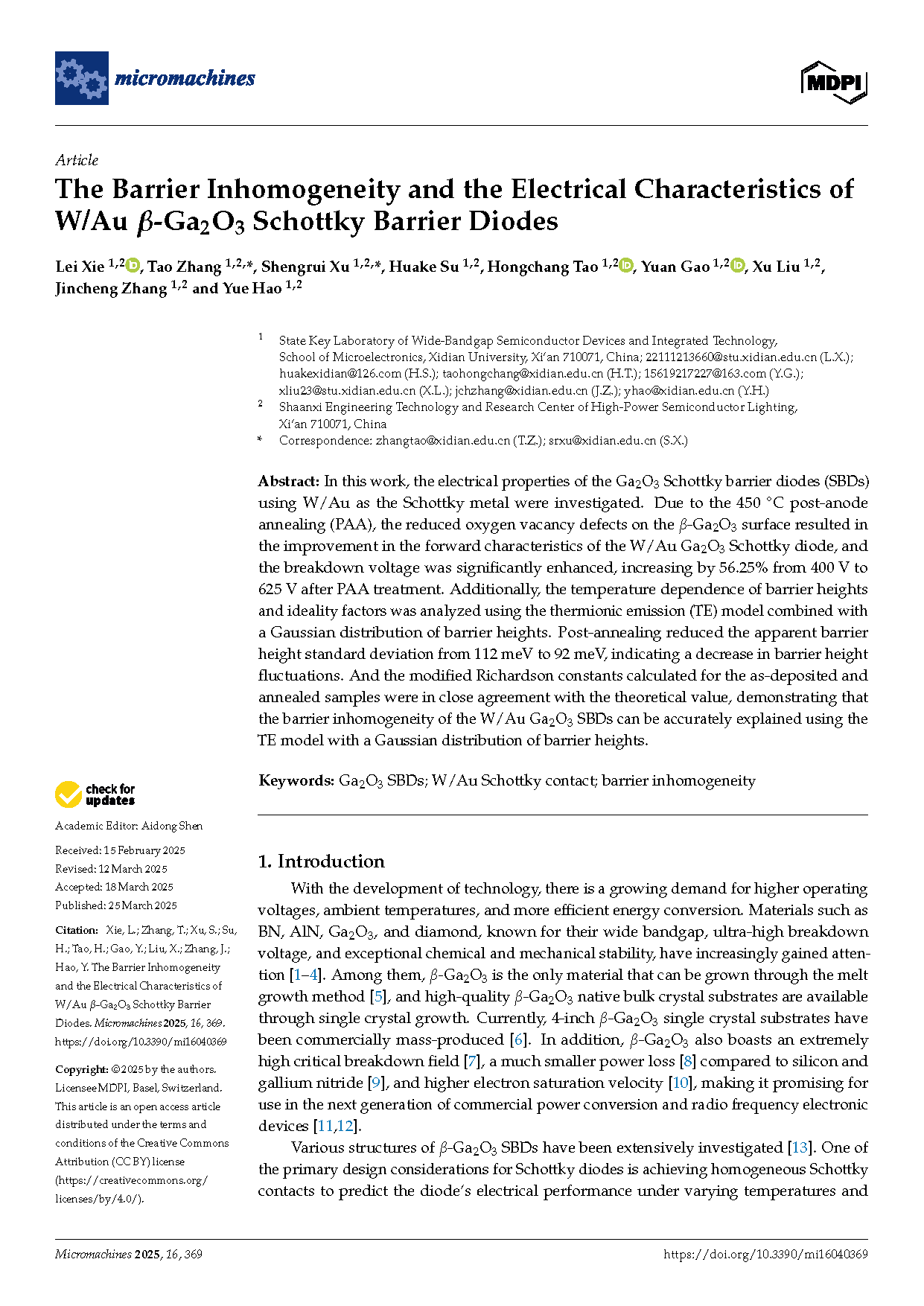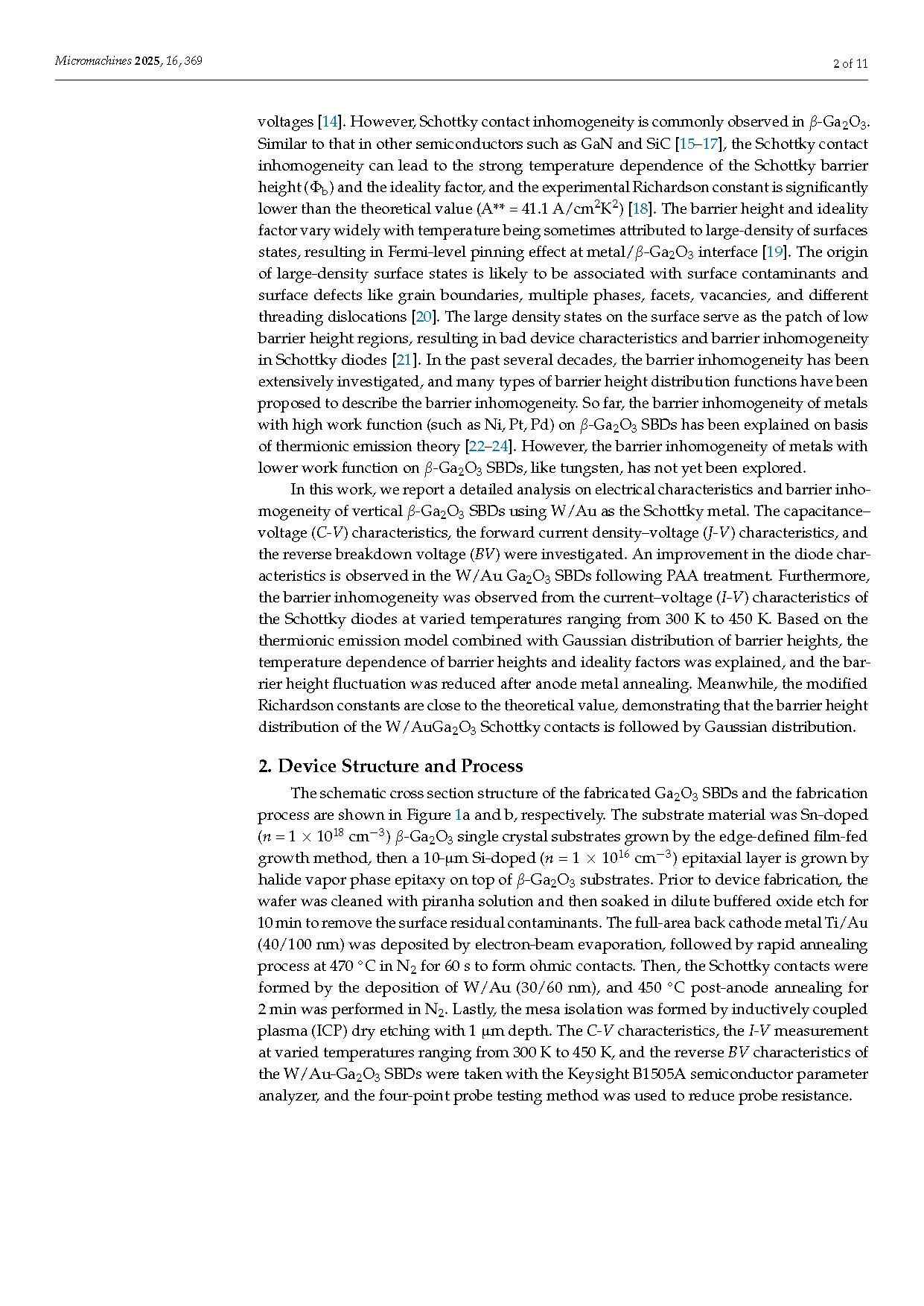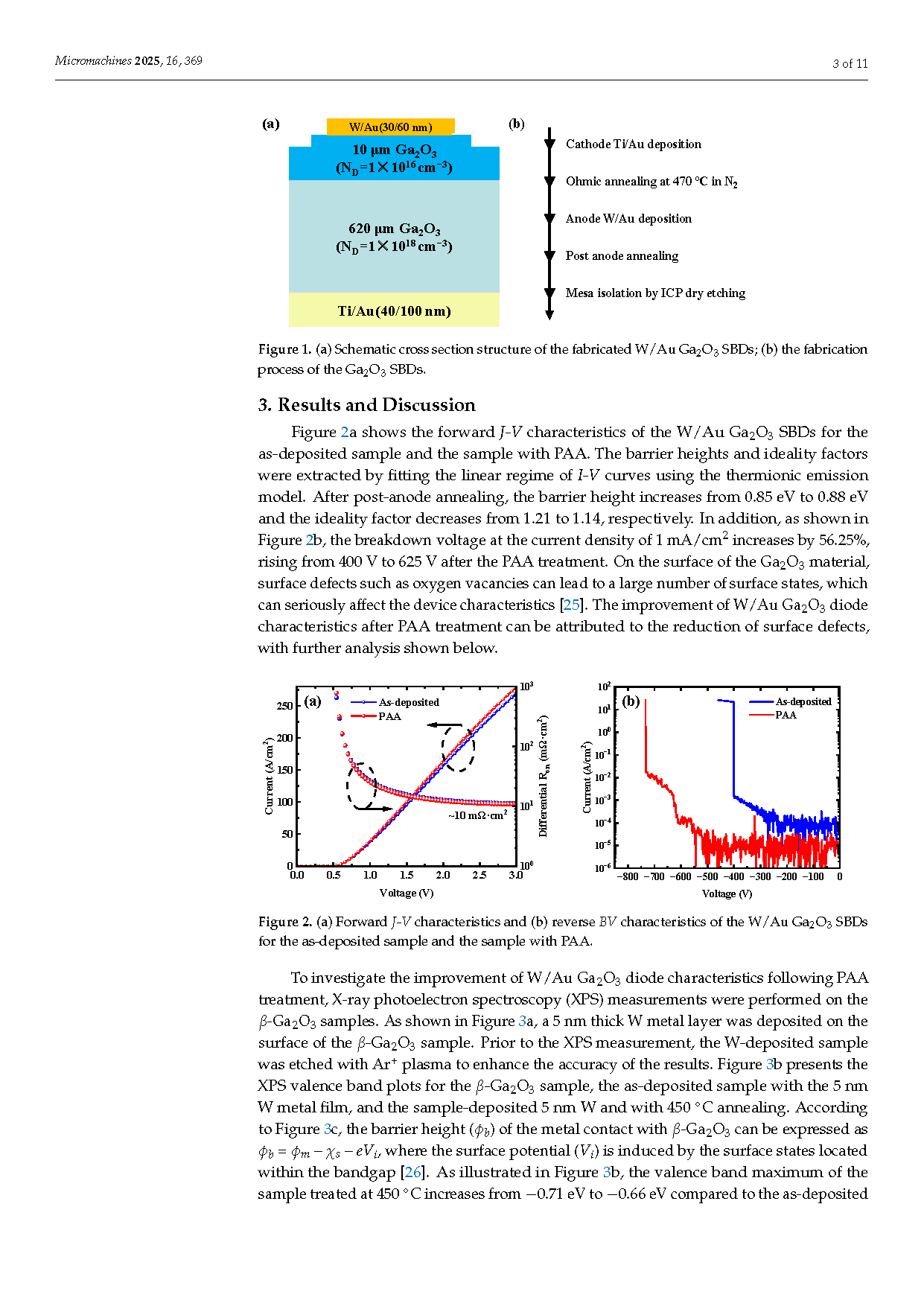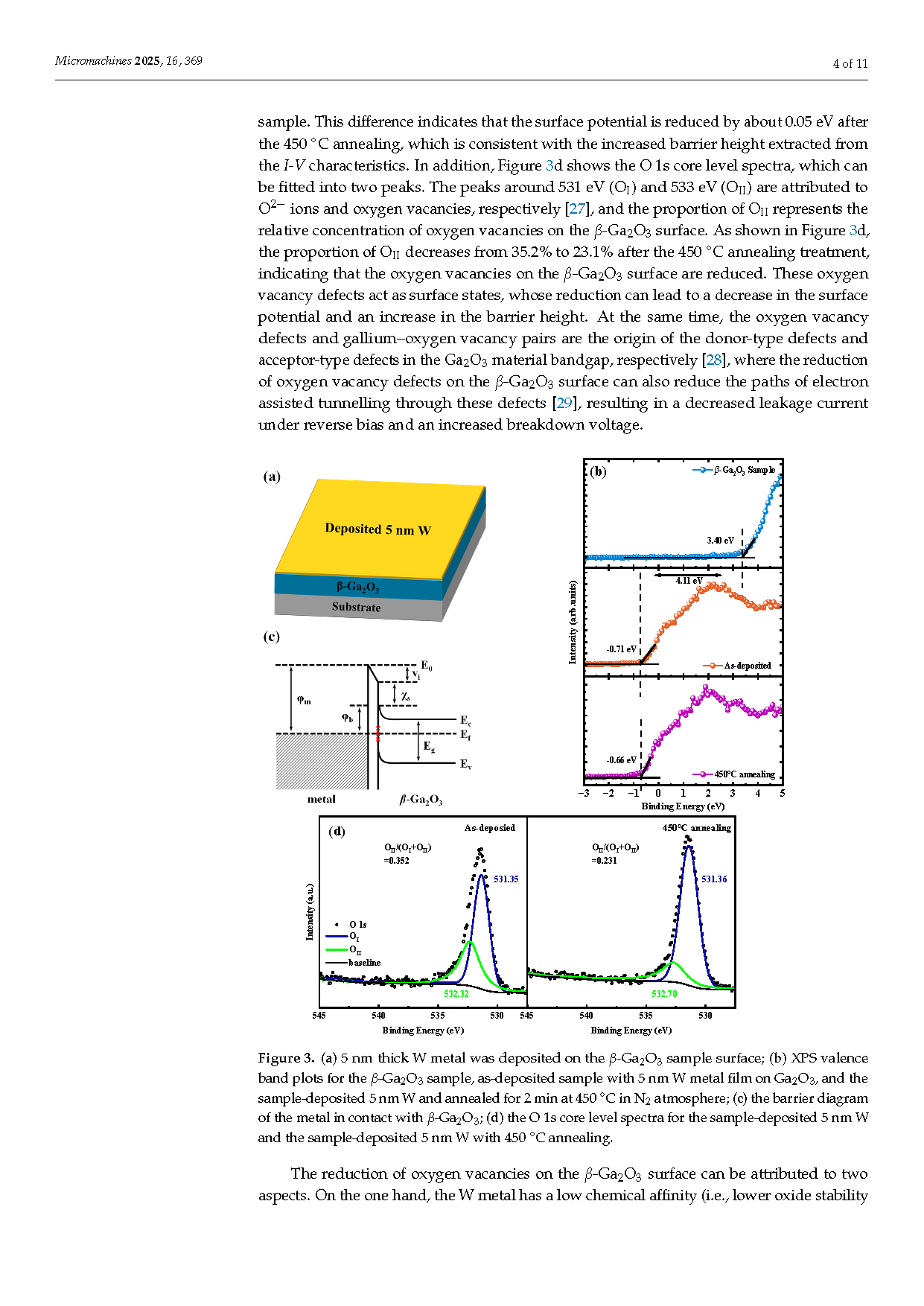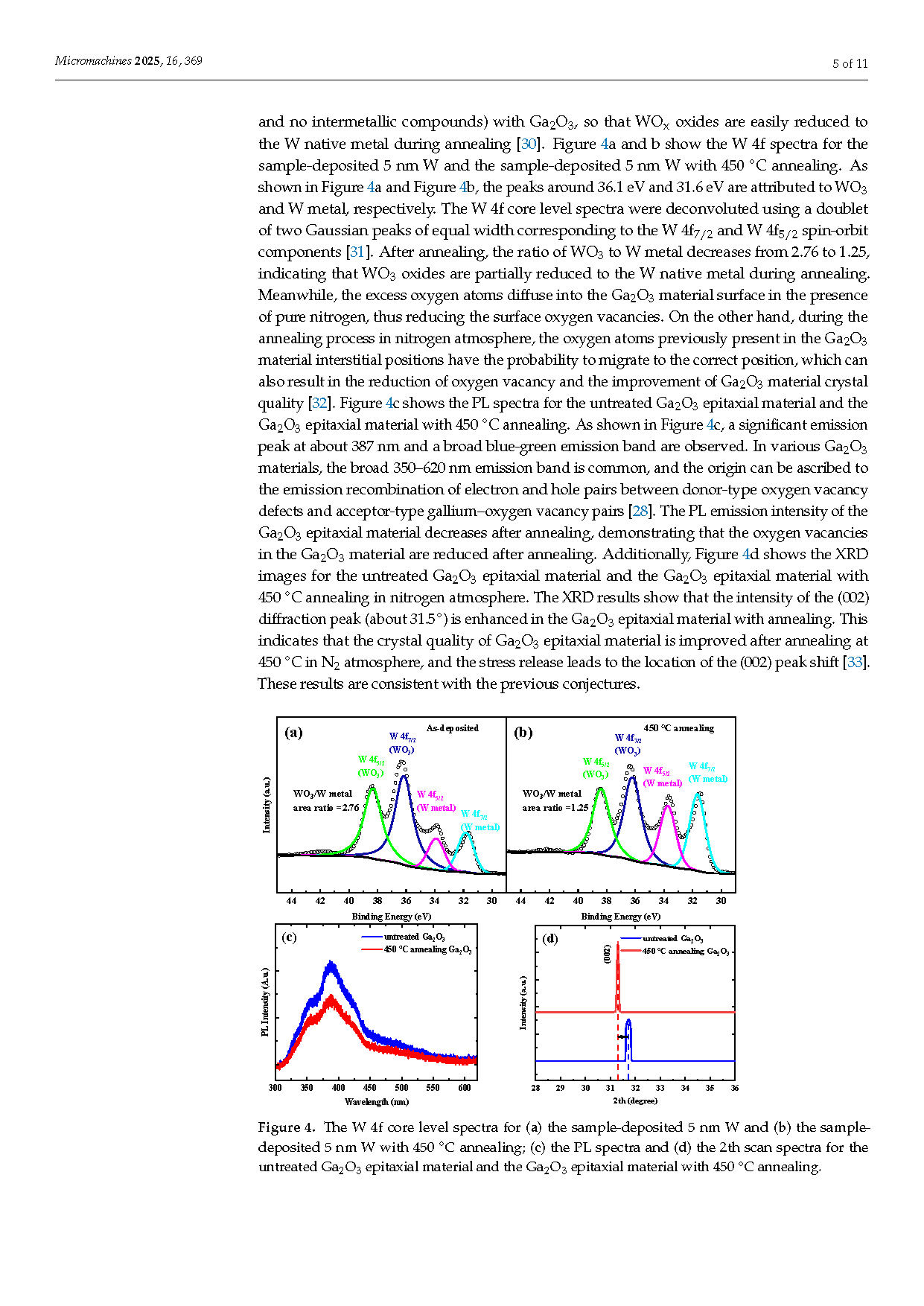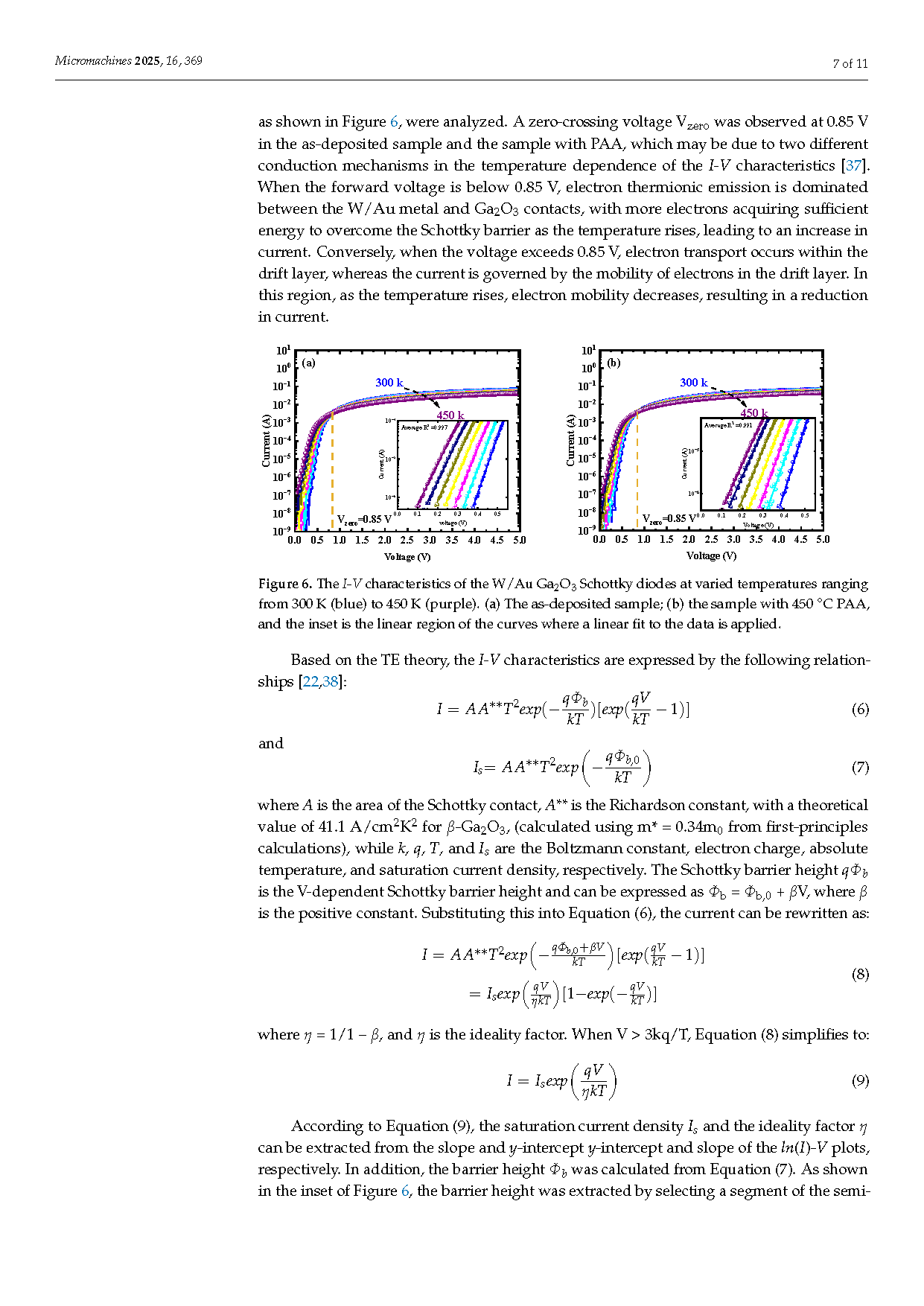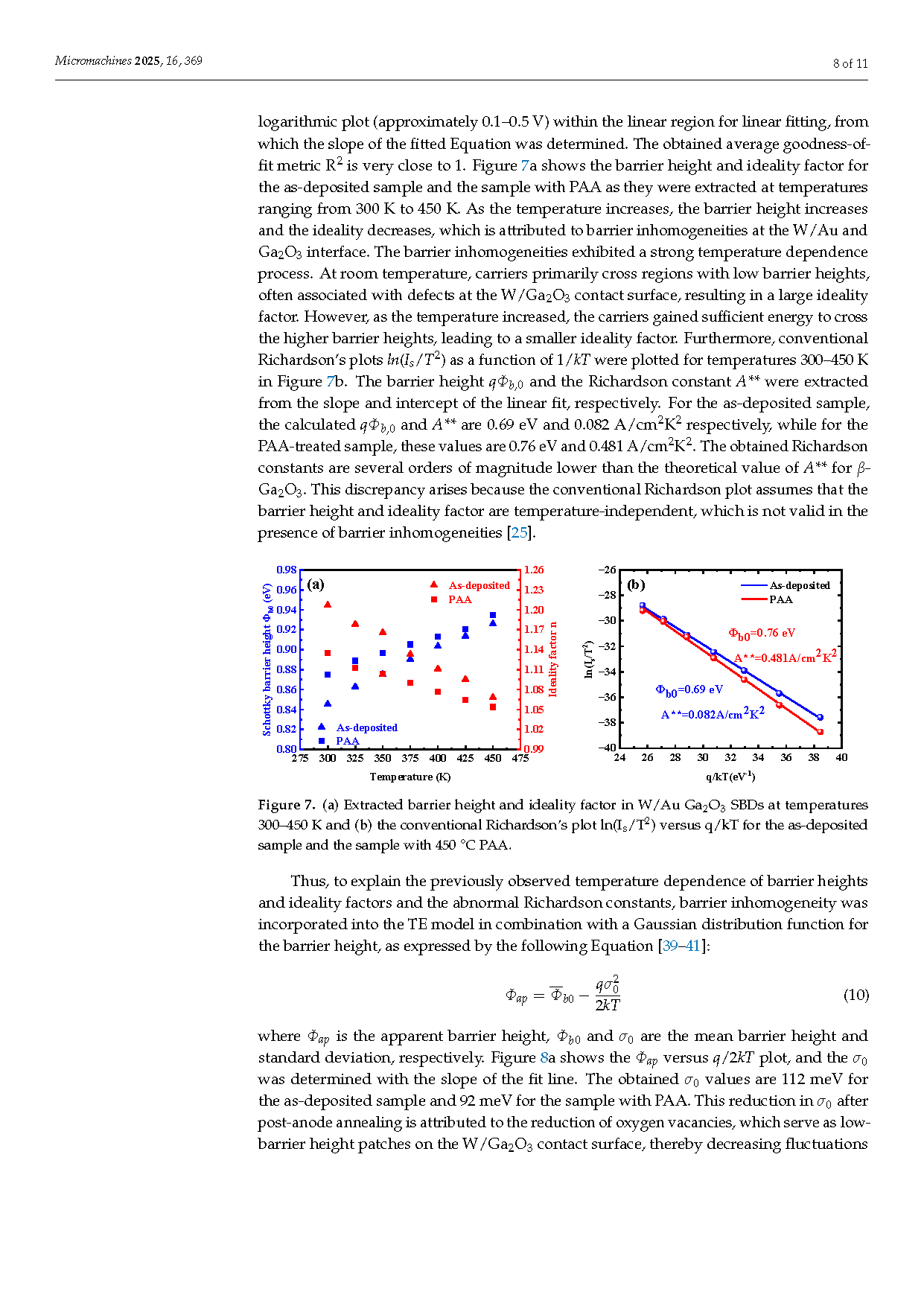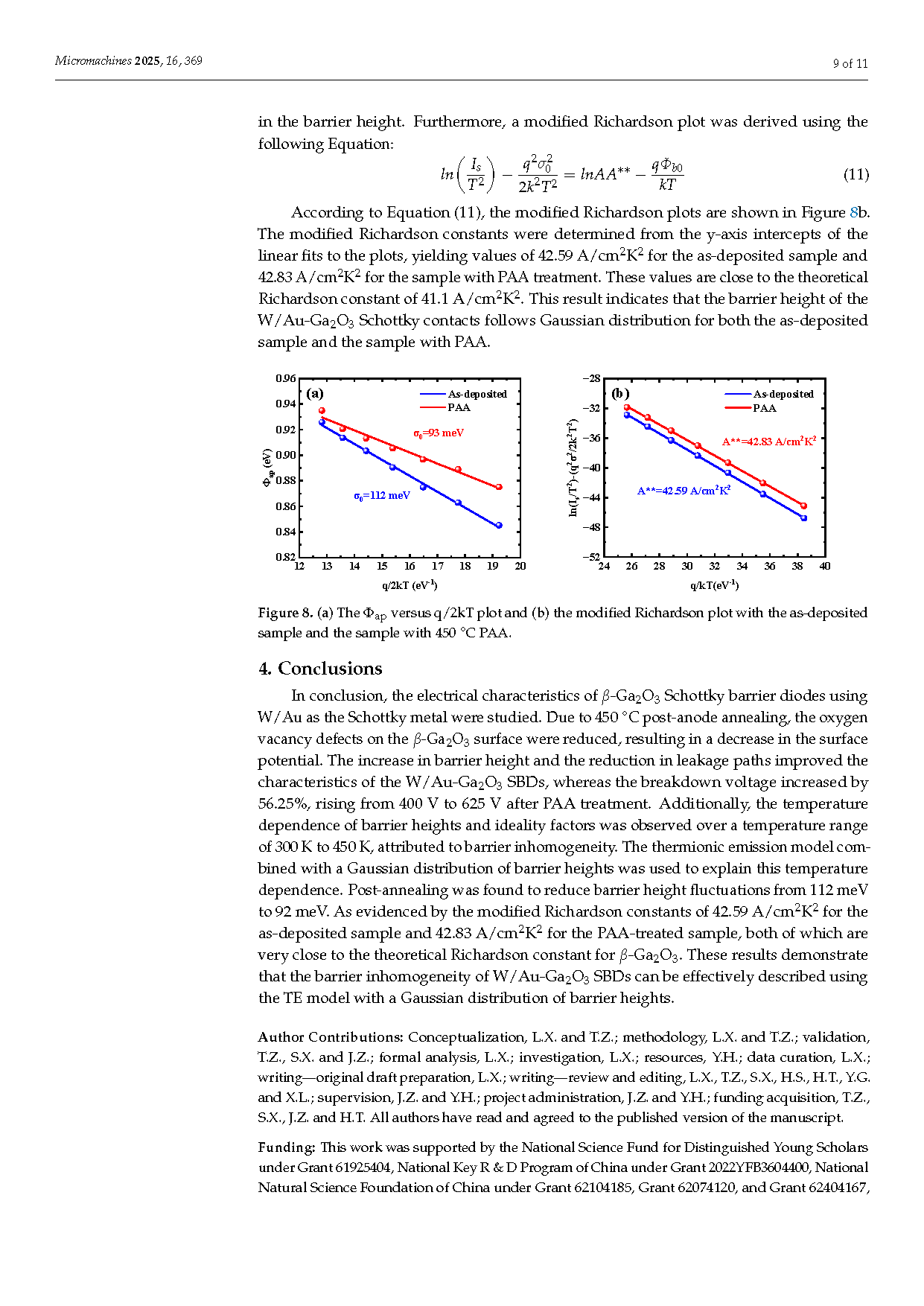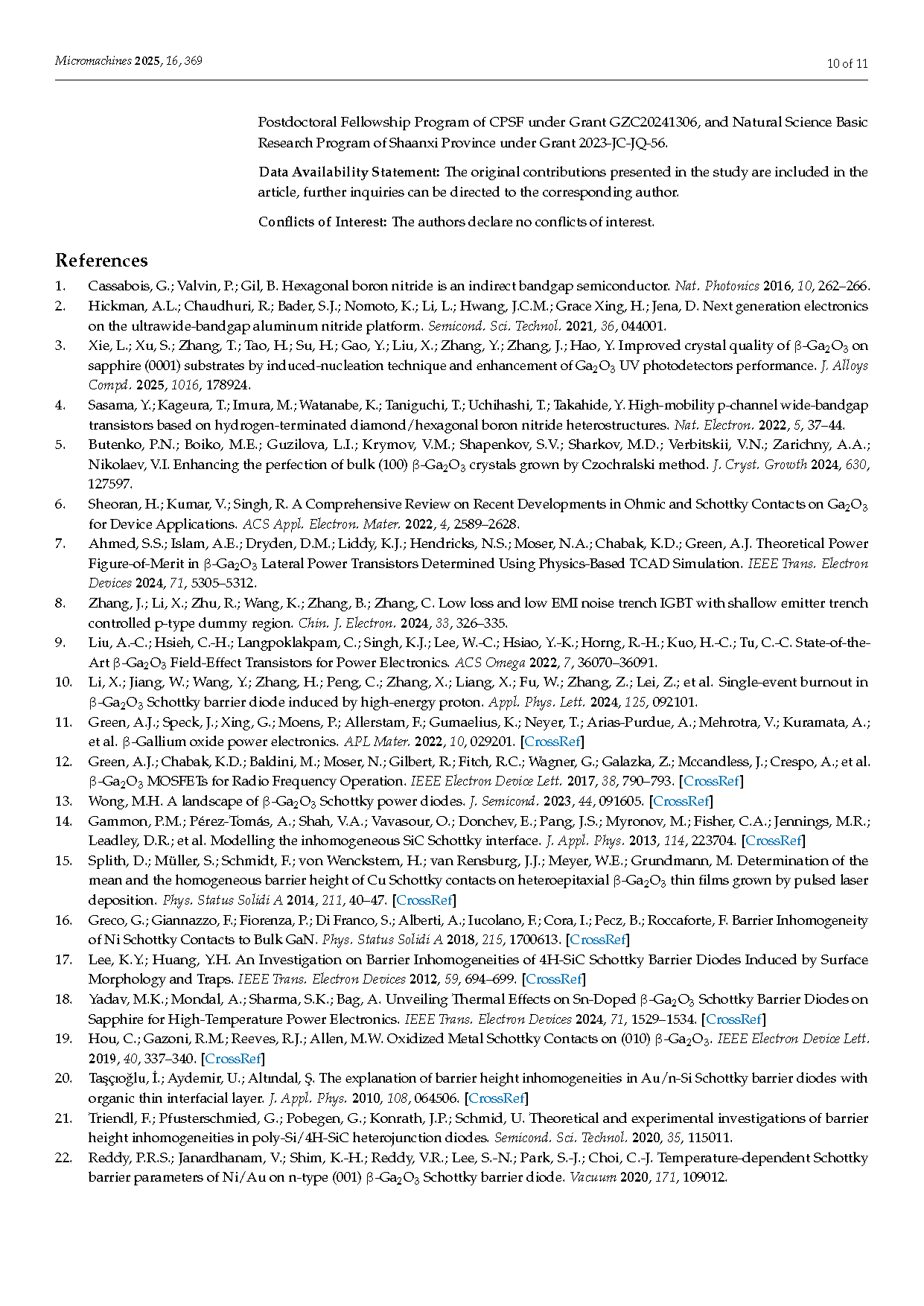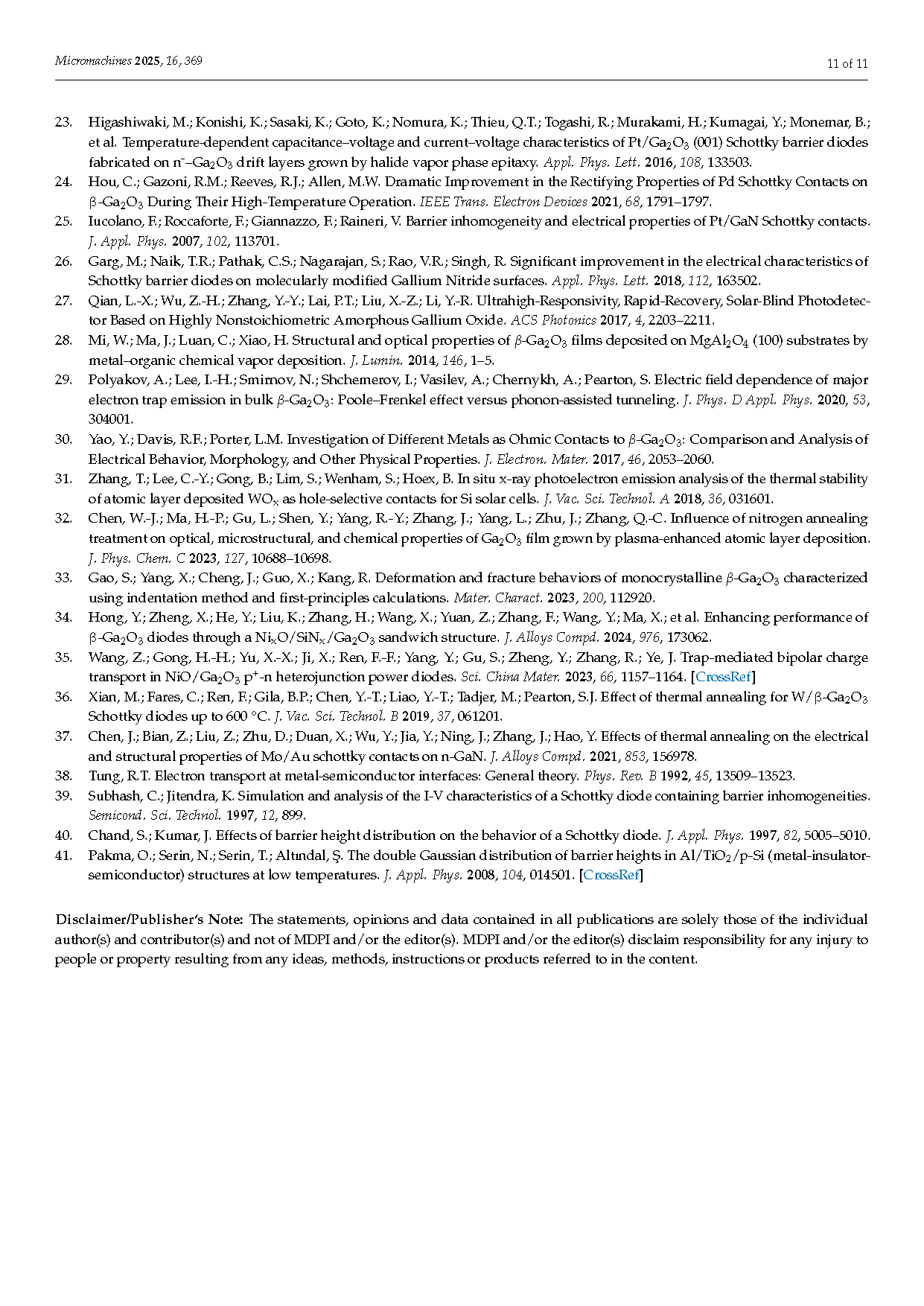

【Member Papers】Xidian University---The Barrier Inhomogeneity and the Electrical Characteristics of W/Au β-Ga₂O₃ Schottky Barrier Diodes
日期:2025-05-14阅读:465
Researchers from the Xidian University have published a dissertation titled "The Barrier Inhomogeneity and the Electrical Characteristics of W/Au β-Ga2O3 Schottky Barrier Diodes" in Micromachines.
Project Support
This work was supported by the National Science Fund for Distinguished Young Scholars under Grant 61925404, National Key R & D Program of China under Grant 2022YFB3604400, National Natural Science Foundation of China under Grant 62104185, Grant 62074120, and Grant 62404167, Postdoctoral Fellowship Program of CPSF under Grant GZC20241306, and Natural Science Basic Research Program of Shaanxi Province under Grant 2023-JC-JQ-56.
Background
With the development of technology, there is a growing demand for higher operating voltages, ambient temperatures, and more efficient energy conversion. Materials such as BN, AlN, Ga₂O₃, and diamond, known for their wide bandgap, ultra-high breakdown voltage, and exceptional chemical and mechanical stability, have increasingly gained attention. Among them, β-Ga₂O₃ is the only material that can be grown through the melt growth metho, and high-quality β-Ga₂O₃ native bulk crystal substrates are available through single crystal growth. Currently, 4-inch β-Ga₂O₃ single crystal substrates have been commercially mass-produced. In addition, β-Ga₂O₃ also boasts an extremely high critical breakdown field, a much smaller power loss compared to silicon and gallium nitride, and higher electron saturation velocity, making it promising for use in the next generation of commercial power conversion and radio frequency electronic devices.
Abstract
In this work, the electrical properties of the Ga2O3 Schottky barrier diodes (SBDs) using W/Au as the Schottky metal were investigated. Due to the 450 °C post-anode annealing (PAA), the reduced oxygen vacancy defects on the β-Ga2O3 surface resulted in the improvement in the forward characteristics of the W/Au Ga2O3 Schottky diode, and the breakdown voltage was significantly enhanced, increasing by 56.25% from 400 V to 625 V after PAA treatment. Additionally, the temperature dependence of barrier heights and ideality factors was analyzed using the thermionic emission (TE) model combined with a Gaussian distribution of barrier heights. Post-annealing reduced the apparent barrier height standard deviation from 112 meV to 92 meV, indicating a decrease in barrier height fluctuations. And the modified Richardson constants calculated for the as-deposited and annealed samples were in close agreement with the theoretical value, demonstrating that the barrier inhomogeneity of the W/Au Ga2O3 SBDs can be accurately explained using the TE model with a Gaussian distribution of barrier heights.
Conclusions
In conclusion, the electrical characteristics of β-Ga2O3 Schottky barrier diodes using W/Au as the Schottky metal were studied. Due to 450 °C post-anode annealing, the oxygen vacancy defects on the β-Ga2O3 surface were reduced, resulting in a decrease in the surface potential. The increase in barrier height and the reduction in leakage paths improved the characteristics of the W/Au-Ga2O3 SBDs, whereas the breakdown voltage increased by 56.25%, rising from 400 V to 625 V after PAA treatment. Additionally, the temperature dependence of barrier heights and ideality factors was observed over a temperature range of 300 K to 450 K, attributed to barrier inhomogeneity. The thermionic emission model combined with a Gaussian distribution of barrier heights was used to explain this temperature dependence. Post-annealing was found to reduce barrier height fluctuations from 112 meV to 92 meV. As evidenced by the modified Richardson constants of 42.59 A/cm2K2 for the as-deposited sample and 42.83 A/cm2K2 for the PAA-treated sample, both of which are very close to the theoretical Richardson constant for β-Ga2O3. These results demonstrate that the barrier inhomogeneity of W/Au-Ga2O3 SBDs can be effectively described using the TE model with a Gaussian distribution of barrier heights.
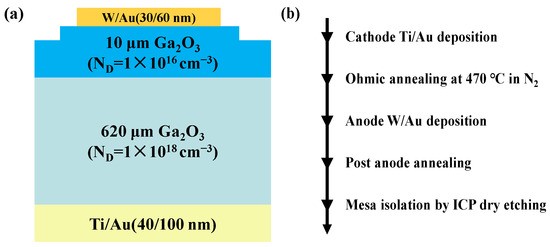
Figure 1. (a) Schematic cross section structure of the fabricated W/Au Ga2O3 SBDs; (b) the fabrication process of the Ga2O3 SBDs.
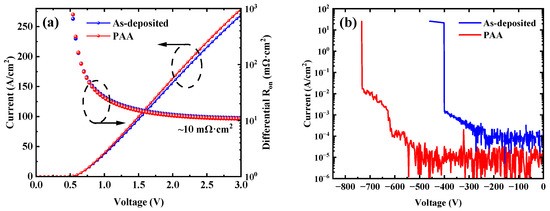
Figure 2. (a) Forward J-V characteristics and (b) reverse BV characteristics of the W/Au Ga2O3 SBDs for the as-deposited sample and the sample with PAA.
DOI:
doi.org/10.3390/mi16040369
